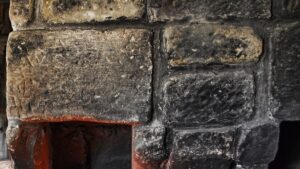Lingering smoke odour after a fire can cause discomfort, including headaches, due to semi-volatile organic compounds (SVOCs) like creosote. Learn how to identify and safely clean creosote residue to restore your indoor air quality.
Understanding Smoke Odour and Creosote
The faint, persistent smoke odour is caused by SVOCs with boiling points ranging from 200°C to 500°C. Creosote, a tar-like residue, contains heavy compounds that evaporate slowly, sometimes persisting for weeks or months. Cleaning these residues is essential to reduce the smell and mitigate potential health risks.
Safe Cleaning Practices for Creosote Residue
- Toxicity Concerns: Creosote may contain Polycyclic Aromatic Compounds (PAHs), which can be harmful. Always take precautions during cleaning.
- Protective Equipment:
- Wear rubber gloves to prevent skin contact.
- Use a respirator with solvent cartridges if the smell causes headaches or irritation.
- Ventilation: Keep windows open to ensure proper airflow while cleaning.
- Cleaning Supplies: Many products for removing smoke residues can be harsh. Follow the manufacturer’s instructions carefully to avoid exposure to irritating chemicals.
Benefits of Partnering with a Canadian Testing Laboratory
LCS Laboratory Inc. offers advanced testing services to identify creosote components lingering in your home. Understanding the specific compounds allows for more effective cleaning and improved air quality. Working with a Canadian laboratory ensures:
- Fast results: Quick analysis to address contamination promptly.
- Expert support: Tailored recommendations based on Canadian safety standards.
- Local convenience: Easy sample submission and direct communication with specialists.
Contact Us
Email LCS Laboratory to discuss your smoke contamination concerns. Our team can provide testing services to identify the residue causing odours and guide you on the most effective cleaning strategies.












